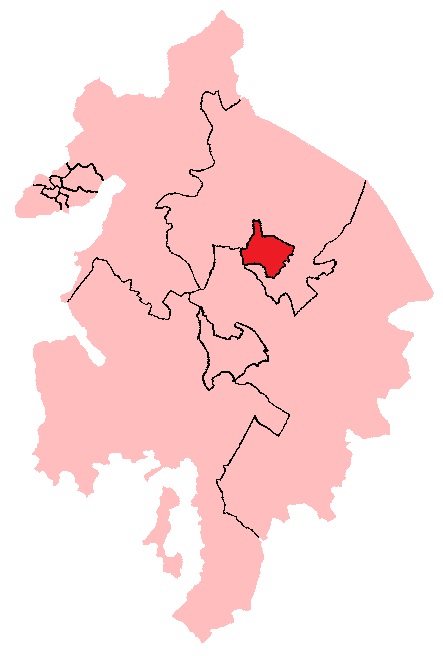|
Coventry East (UK Parliament Constituency)
Coventry East was a parliamentary constituency in the city of Coventry in the West Midlands. It returned one Member of Parliament (MP) to the House of Commons of the Parliament of the United Kingdom, elected by the first past the post system. It was only ever represented by one Member - Labour cabinet minister Richard Crossman. History Until 1945, the city of Coventry was represented by a single Member. Population growth meant that it had grown to 89,001 electors at the time of the 1935 general election, and in the 1939 electoral register it had 87,487 electors. The County Borough of Coventry had also expanded its boundaries in the late 1930s, taking in an additional 66,425 electors. Two nearby divisions of Warwickshire had exceptionally large electorates: Nuneaton at 112,503 and Tamworth at 118,131. Accordingly, the area was included in the Schedule to the House of Commons (Redistribution of Seats) Act 1944 as abnormally large constituencies to be divided by the Boundary C ... [...More Info...] [...Related Items...] OR: [Wikipedia] [Google] [Baidu] |
Coventry (UK Parliament Constituency)
Coventry was a borough constituency which was represented in the House of Commons of England and its successors, the House of Commons of Great Britain and the House of Commons of the United Kingdom. Centred on the City of Coventry in Warwickshire, it returned two Members of Parliament (MPs) from 1295 until the Redistribution of Seats Act 1885, when its representation was reduced to one. The Coventry constituency was abolished for the 1945 general election, when it was split into two new constituencies: Coventry East and Coventry West. Elections were held using the bloc vote system when electing two MPs (until 1885), and then first-past-the-post to elect one MP thereafter. Boundaries From 1885 to 1918 the constituency consisted of the city of Coventry and the parish of Stoke.Debrett's House of Commons & Judicial Bench, 1886 From 1918 until the constituency disappeared in 1945, it consisted of the County Borough of Coventry. History In the eighteenth century Coventry w ... [...More Info...] [...Related Items...] OR: [Wikipedia] [Google] [Baidu] |
Labour Party (UK)
The Labour Party is a political party in the United Kingdom that has been described as an alliance of social democrats, democratic socialists and trade unionists. The Labour Party sits on the centre-left of the political spectrum. In all general elections since 1922, Labour has been either the governing party or the Official Opposition. There have been six Labour prime ministers and thirteen Labour ministries. The party holds the annual Labour Party Conference, at which party policy is formulated. The party was founded in 1900, having grown out of the trade union movement and socialist parties of the 19th century. It overtook the Liberal Party to become the main opposition to the Conservative Party in the early 1920s, forming two minority governments under Ramsay MacDonald in the 1920s and early 1930s. Labour served in the wartime coalition of 1940–1945, after which Clement Attlee's Labour government established the National Health Service and expanded the welfa ... [...More Info...] [...Related Items...] OR: [Wikipedia] [Google] [Baidu] |
Parliamentary Constituencies In The West Midlands (county) (historic)
A parliamentary system, or parliamentarian democracy, is a system of democracy, democratic government, governance of a sovereign state, state (or subordinate entity) where the Executive (government), executive derives its democratic legitimacy from its ability to command the support ("confidence") of the legislature, typically a parliament, to which it is accountable. In a parliamentary system, the head of state is usually a person distinct from the head of government. This is in contrast to a presidential system, where the head of state often is also the head of government and, most importantly, where the executive does not derive its democratic legitimacy from the legislature. Countries with parliamentary systems may be Constitutional monarchy, constitutional monarchies, where a monarch is the head of state while the head of government is almost always a member of parliament, or parliamentary republics, where a mostly ceremonial president is the head of state while the head o ... [...More Info...] [...Related Items...] OR: [Wikipedia] [Google] [Baidu] |

